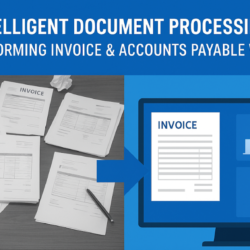Businesses are depending more and more on analytics to direct their strategies, streamline operations, and find new possibilities in the era of data-driven decision-making. However, turning unprocessed data into useful insights necessitates a thorough comprehension of corporate goals, procedures, and difficulties in addition to technological know-how. This is where the role of a Business Analyst (BA) becomes crucial in the data analytics lifecycle. In order to ensure that analytical efforts are in line with organizational objectives and provide measurable value, a business analyst acts as a liaison between technical data teams and business stakeholders.
Understanding the Data Analytics Lifecycle
The data analytics lifecycle encompasses the end-to-end process of collecting, processing, analyzing, and interpreting data to support business decisions. It typically includes several stages: data discovery, data preparation, model planning, model building, result communication, and operationalization.
While data scientists and analysts focus on the technical aspects such as statistical modeling, machine learning, and data visualization the business analyst plays a pivotal role in connecting these technical tasks with strategic business outcomes. Their involvement ensures that the analytics initiative addresses the right problem and produces results that stakeholders can understand and act upon. Many professionals enhance these skills through a Data Analytics Course in Chennai, which offers practical exposure to both business strategy and data-driven technologies.
1. Defining Business Objectives
The first step in any analytics project is identifying the business problem to be solved. A business analyst is in charge of interacting with important parties to establish the goals, parameters, and success criteria of a project.
For instance, a company might aim to increase customer retention, reduce operational costs, or improve product recommendations. The BA translates these goals into analytical questions such as “What factors influence customer churn?” or “Which processes cause the most production delays?”
By clearly defining these objectives, business analysts ensure that data teams focus on solving problems that directly contribute to organizational growth rather than performing analysis for its own sake.
2. Gathering and Understanding Requirements
Once the objectives are defined, the business analyst gathers detailed requirements from different departments. This involves understanding data sources, business rules, and key performance indicators (KPIs).
They collaborate closely with data engineers, database administrators, and IT teams to ensure the right data is available and accessible. The BA’s ability to translate business language into technical specifications helps data professionals understand what needs to be measured and why.
This step also includes identifying data gaps and recommending new data collection methods or tools to support better analysis.
3. Collaborating on Data Preparation and Analysis
Data preparation is often one of the most time-consuming stages in the analytics lifecycle. Business analysts assist by validating the relevance and accuracy of the data being used. They help data teams interpret business context such as seasonality in sales, regional performance variations, or customer behavior trends ensuring that the analysis remains aligned with real-world conditions.
During the model-building phase, business analysts might not directly code or create models, but they play a key role in evaluating assumptions, interpreting results, and determining whether analytical outputs align with business expectations. Their domain knowledge helps ensure that data insights are practical and actionable.
4. Interpreting and Communicating Insights
A critical responsibility of a business analyst is transforming complex analytical results into insights that business leaders can easily understand and use. While data scientists might produce technical reports, it’s the business analyst who crafts clear, visually engaging presentations and translates findings into business recommendations.
For example, instead of reporting “model accuracy improved by 5%,” a business analyst might communicate, “This improvement could reduce customer churn by 10% and increase annual revenue by $2 million.”
By contextualizing data insights, BAs make analytics accessible to decision-makers, ensuring data-driven strategies are effectively implemented.
5. Driving Data-Driven Decisions
After insights are presented, the business analyst works with leadership teams to develop actionable strategies based on the data. This could include process improvements, marketing adjustments, or operational changes.
They also play a key role in prioritizing recommendations helping organizations decide which actions will have the greatest business impact.
6. Monitoring and Continuous Improvement
The analytics lifecycle doesn’t end once insights are implemented. Business analysts continue to monitor outcomes, measure performance, and assess whether the actions taken achieved the desired results.
If outcomes deviate from expectations, BAs collaborate with data teams to revisit models, adjust parameters, or gather new data for further analysis. This ongoing feedback loop guarantees that analytics initiatives change in tandem with shifting market conditions and business requirements. Through this iterative approach, the business analyst ensures that organizations stay agile and responsive to data-driven insights over time.
The Skills That Make Business Analysts Essential in Data Analytics
Business analysts need a mix of hard and soft talents to be successful in this position, such as:
- Analytical thinking to interpret data patterns and trends.
- Communication skills to translate technical insights into clear business language.
- Domain knowledge to understand business operations, industry trends, and KPIs.
- Technical familiarity with data visualization tools (like Power BI or Tableau) and basic knowledge of databases or SQL.
- Problem-solving abilities to identify bottlenecks and recommend effective solutions.
These skills enable business analysts to bridge the technical-business divide and make analytics projects more successful and impactful. Gaining these competencies through a Business Analytics Course in Chennai helps professionals apply analytical insights to real-world business challenges and drive data-informed decision-making.
The Growing Importance of Business Analysts in Data Analytics
As organizations adopt more advanced technologies like machine learning, predictive analytics, and artificial intelligence, the need for professionals who can interpret data in a business context has grown tremendously. Business analysts ensure that data-driven initiatives align with organizational strategy and produce measurable outcomes.
In the modern digital economy, the business analyst is the vital link that ensures data analytics efforts translate into business success. They help organizations identify the right problems, interpret complex data, and implement actionable strategies based on evidence rather than intuition.
By mastering the skills needed to bridge the gap between business and technology, business analysts play an indispensable role in every stage of the data analytics lifecycle from identifying opportunities to driving continuous improvement.
For aspiring professionals, developing these skills through hands-on learning and expert guidance at a reputable training institute in Chennai, such as FITA Academy, can open doors to rewarding careers in data analytics and business strategy.




